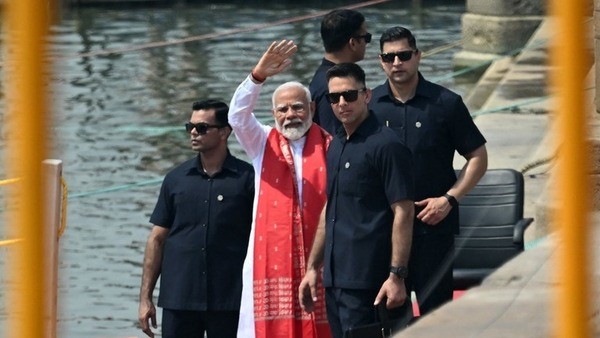Iran’s Plan to Strike Back Against the U.S.
Iran’s Military Preparations Following U.S. Attacks
Loading...

The prime minister, running for election in the sacred city of Varanasi, is disclosed not to possess a car or a house according to mandatory filings.
Prime Minister Narendra Modi of India disclosed his financial situation when submitting his nomination to contest for parliament from the revered site of Varanasi in Uttar Pradesh. India mandates such disclosures to ensure transparency in candidacy.
According to Modi's filings, he possesses assets totaling 30 million rupees ($360,000), predominantly held in fixed deposit receipts at the State Bank of India (SBI), alongside $950 in a savings account. His sole income sources are his government salary and the interest accrued on his savings. For the 2022-23 financial year, the prime minister's total income amounted to 2.3 million rupees ($27,500), from which he paid 0.3 million ($3,600) in income tax.
Significantly, despite being the leader of the world’s most populous nation, Modi does not own land, a house, or a car. Currently, he resides in Panchavati, the prime minister’s residence located at Lok Kalyan Marg, New Delhi.
Modi's official vehicle is the Mercedes Maybach S-650, valued at approximately $1.5 million.
The prime minister’s modest wealth sharply contrasts with that of the wealthiest candidates in the election, where significant financial resources are believed to play a pivotal role.
The wealthiest contender, according to current filings, is Chandra Sekhar Pemmasani, a Telugu Desam Party (TDP) leader who transitioned from being a doctor to an entrepreneur, contesting in Andhra Pradesh state in southern India, with reported assets totaling $683 million. Among other notable figures on the list of affluent candidates in the Indian election are BJP’s Konda Vishweshwar Reddy, with assets valued at approximately $547 million, and Congress candidates Nakul Nath and Venkataramane Gowda, with net worths of $85 million and $74 million respectively.
Modi has held the position of prime minister since 2014, when the ruling Bharatiya Janata Party (BJP) capitalized on a significant wave of populist sentiment to unseat the Congress party-led United People’s Alliance (UPA). Prior to that, he served as the chief minister of Gujarat state in western India from 2001 to 2014. Modi is now seeking a third consecutive term as prime minister. His party faces its most significant opposition from the Indian National Developmental Inclusive Alliance (INDIA), a coalition of 28 parties. Nonetheless, pre-election polls indicate that the ruling party is likely to retain power.
Varanasi holds special significance for both Modi and the BJP, as the party has emerged victorious in this constituency eight times since 1991, with only one instance of RK Mishra from the Congress breaking its dominance in 2004. Ahead of filing his nomination on Tuesday, Modi participated in prayers at Varanasi’s sacred Dashashwamedh Ghat, situated beside the Ganga River, alongside Uttar Pradesh Chief Minister Yogi Adityanath. The voting in Varanasi is scheduled for June 1, marking the final phase of the seven-phase election. The results will be announced on June 4.
Iran’s Military Preparations Following U.S. Attacks
Troops remain in five strategic locations, raising fears of renewed tensions and long-term occupation.
Opposition forces have taken control of the capital after a significant offensive. Here is how it unravelled.
